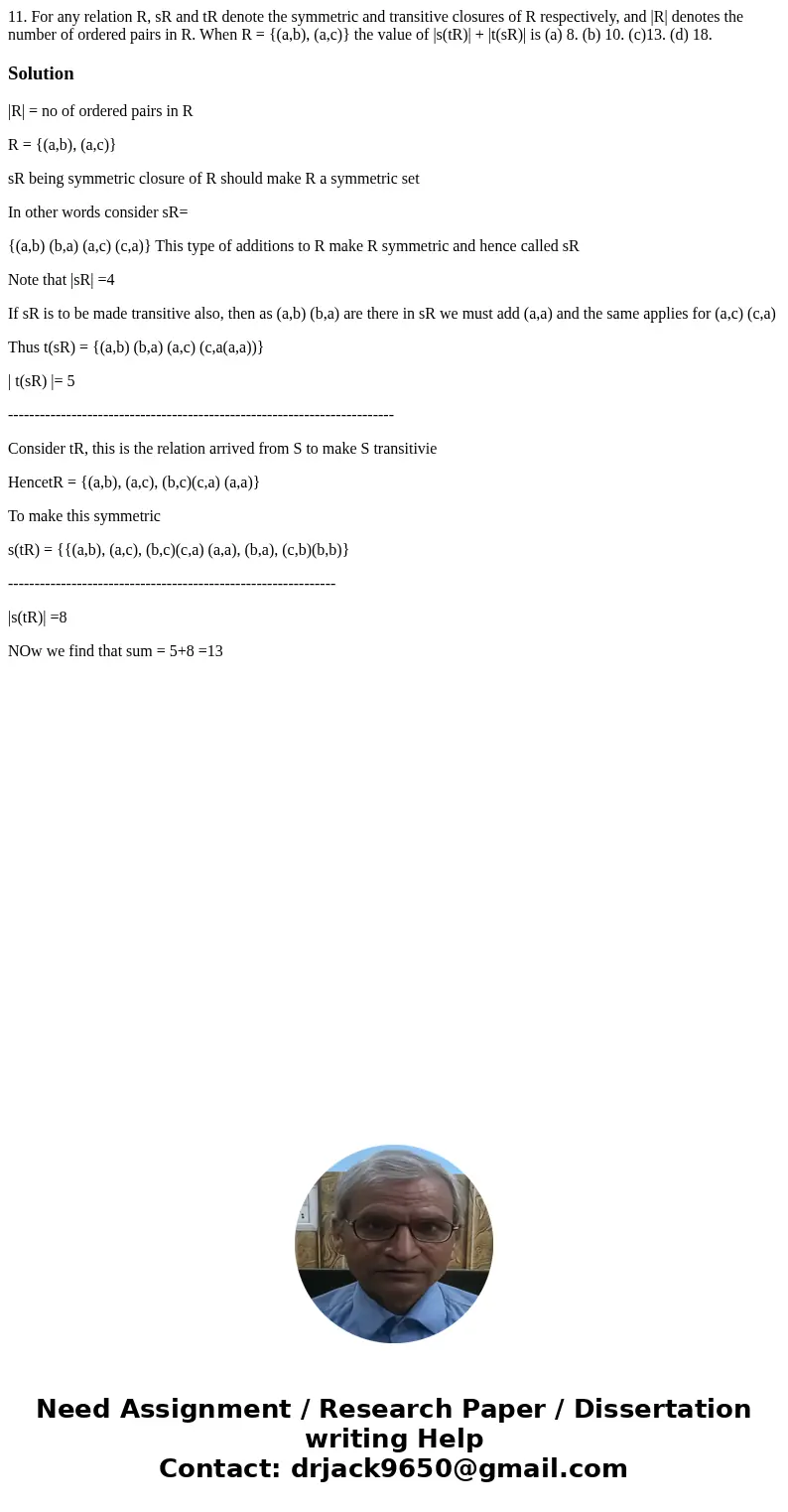11 For any relation R sR and tR denote the symmetric and tra
Solution
|R| = no of ordered pairs in R
R = {(a,b), (a,c)}
sR being symmetric closure of R should make R a symmetric set
In other words consider sR=
{(a,b) (b,a) (a,c) (c,a)} This type of additions to R make R symmetric and hence called sR
Note that |sR| =4
If sR is to be made transitive also, then as (a,b) (b,a) are there in sR we must add (a,a) and the same applies for (a,c) (c,a)
Thus t(sR) = {(a,b) (b,a) (a,c) (c,a(a,a))}
| t(sR) |= 5
-------------------------------------------------------------------------
Consider tR, this is the relation arrived from S to make S transitivie
HencetR = {(a,b), (a,c), (b,c)(c,a) (a,a)}
To make this symmetric
s(tR) = {{(a,b), (a,c), (b,c)(c,a) (a,a), (b,a), (c,b)(b,b)}
--------------------------------------------------------------
|s(tR)| =8
NOw we find that sum = 5+8 =13

 Homework Sourse
Homework Sourse